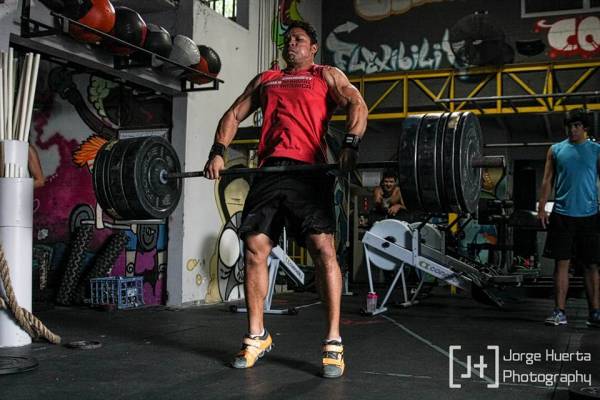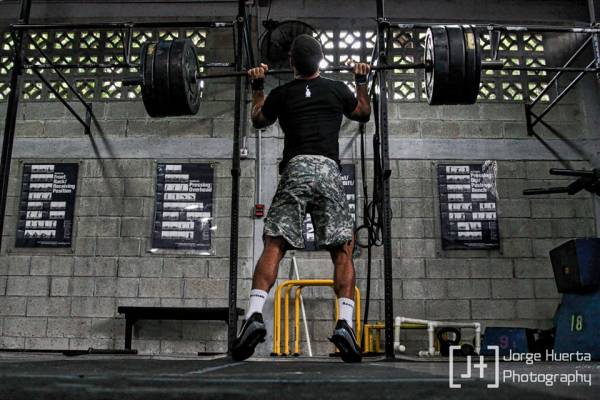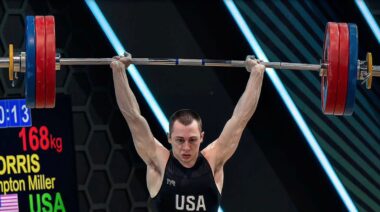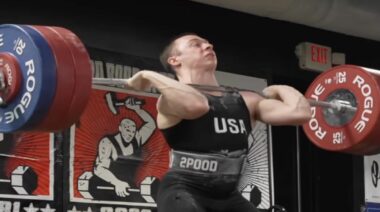Much has been written about the trajectory of the barbell on its path upwards. At one time it seemed to many coaches that the ideal upward trajectory would be a straight line. After all, didn’t our physics teachers tell us that a straight line was the shortest distance between two points?
The Actual Trajectory of the Lift
That is true from a physics standpoint and even some lifters were able to manage a straight pull. But back in the 1960s various coaches noticed that few of the world’s top lifters used this supposedly superior straight pull.
It was discovered that most of the top lifters used an S-shaped pull. They would pull the bar in towards the shins, and then it would swing out a bit and then head back in at the top rack position. Some of the S’s were flatter than others but few were completely straight. This type of pull is now considered canon in weightlifting coaching.
What has not been noticed to the same extent by coaches and writers is the fact that many lifters pull the bar upward unevenly. One side or the other always rises faster than the other. Needless to say this is not ideal as symmetric lifting is the most efficient. What might cause such an aberration in pulling?
The Cause of the Uneven Pull
This unevenness in the pull is generally caused by the asymmetrical development of the muscular tissue on either side of the body. It is difficult to notice this when looking at the lifter from the side. One would see an S-shaped pull on either side, but would not notice that the ends of the bar differ in height at any given point in time. Therefore, this fault is often committed without knowledge by the coach or the athlete.
Years ago I knew a lifter who had this problem of unevenness in his pull. This especially affected his clean. He would often rack the bar on one side, but not on the other. For a long time no one could figure out why he was pulling unevenly. You could not see any uneven development in his physique when he was standing. Then one time I was head referee as he was lifting. I saw him starting his lift in the stiff-legged deadlift starting position and lo and behold what did I see: his left spinal erector was much bigger than the right one.
The most interesting thing was that it was not the right side of the barbell that lagged behind. That was what we all expected, but the situation was exactly the opposite. The strong erector was apparently not doing its job, while the weak side was working harder. What was going on here?
This is a situation that is encountered often with bench pressers. Most of us are stronger in our dominant side so we might expect that it would show during the lift. That doesn’t happen. What does happen is that we tend to favor our weak side by pushing harder on it and using the strong side to stabilize the weak. Bench pressers are aware of this. Olympic lifters not so much. But the same thing happens.

How to Fix the Uneven Lift
The obvious answer is the use of remedial exercise. An observant coach is most necessary here. And regardless of the lift, the athlete has to consciously attempt to lift the bar evenly. The strong side will not be trained with its ideal intensity, but the weak side will be working harder. In time, the strength disparity should be eliminated.
In addition to an observant coach video analysis is also helpful. Often the athlete cannot feel him- or herself lifting the bar unevenly, but they cannot argue with visual proof of such. Often the athletes will even deny that they pull unevenly. But the video puts the lie to that opinion. They will then be much more conscious in their attempts to correct the situation. All of this assumes that the bar is gripped evenly, of course.
It should also be pointed out that an uneven pull will result frequently in a press-out on the low side in the snatch and the so-called “dirty clean” in the clean and jerk. Both of these will get you red-lighted in competition.
Uneven jerks are also common. The lifter may or may not be stronger in one leg than the other. Often it is because the lifter favors the non-dominant leg, the one that will be thrown forward in the split (usually). The other leg just goes along for the ride, the result being a weak jerk on that side – and either a press-out or a miss.
Admittedly, remedial work is more difficult with the pulls. It is hard to do a one-handed pull that would be of much use in correcting the snatches or cleans. In the various forms of pressing is a little easier to isolate the weak side. This is why dumbbell bench presses and military presses are so valuable to the strength athlete. It’s a lot harder to cheat. There is no common barbell to stabilize against. You have to honestly lift the weight with only your arms.

The Takeaway: Lifting in Three Dimensions
In any case, it is useful to remember that the barbell moves in a three-dimensional pathway. It is even possible to have the barbell closer to one side of the body than the other. Fortunately this does not happen too often. But an uneven pull is common and it’s existence should not be ignored by lifters and coaches.
Don’t get carried away with finessing the proper S-shaped pull, if you are also pulling more on one side than the other. In weightlifting, as in bodybuilding, symmetry is everything.
Photo 1 courtesy of Shutterstock.
Photos 2 & 3 courtesy of Jorge Huerta Photography.






